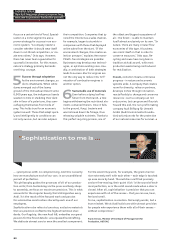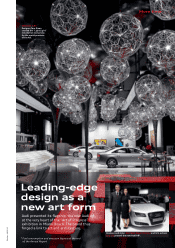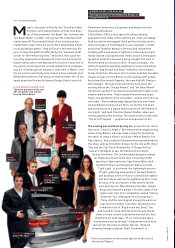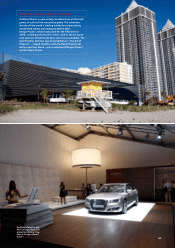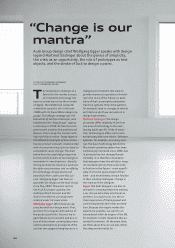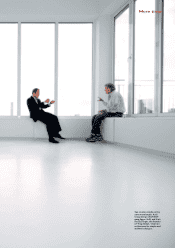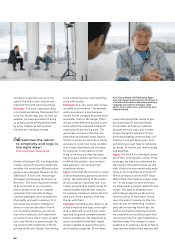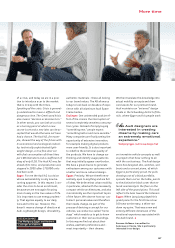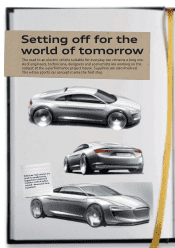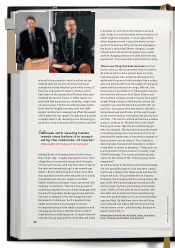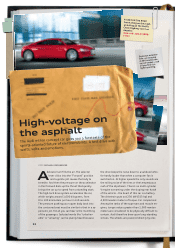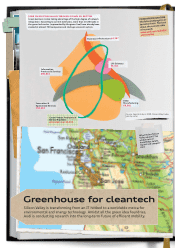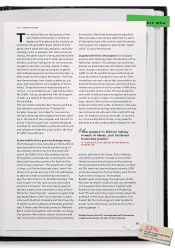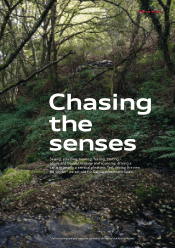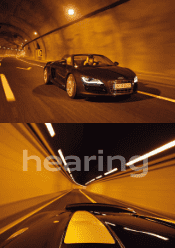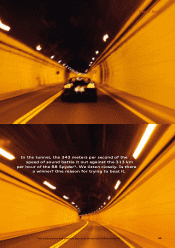Audi 2009 Annual Report Download - page 92
Download and view the complete annual report
Please find page 92 of the 2009 Audi annual report below. You can navigate through the pages in the report by either clicking on the pages listed below, or by using the keyword search tool below to find specific information within the annual report.
More time
heir day normally revolves around gaps,
aerodynamics and revs. But carmakers
sometimes also have to contend with
philosophical issues. One existential question is of
particular concern to Stefan Sielaff, chief designer
of the Audi brand: “Do we want to make an eco-
logical statement with the electric vehicle, or do
we want to follow the accustomed automobile
aesthetic?” Not even Sielaff knows the final an-
swer yet, but one thing is certain: “We are stand-
ing at the threshold of a paradigm shift,” he says.
“Times haven’t been this exciting since the first
cars replaced the carriage. We have the oppor-
tunity to make design history and engineering
history at the same time.”
This feeling that the time is ripe for groundbreak-
ing ideas can be found everywhere throughout the
Audi Group. Take Franciscus van Meel, for in-
stance. The head of Project Steering/Strategy for
Vehicle Electrification regularly withdraws at the
end of the work day into a “secret war room” with
other managers. The room is so secret that only
the participants know if they have to leave the
plant to get there. Once there they get down to
the serious business: electrically powered cars.
Electricity has been a powerful topic for years at
Audi. The e-performance project house was estab-
lished in January 2009. Ricky Hudi, head of
Electrics and Electronics Development, describes
it as a “cross-unit pooling of expertise in order to
address the essential themes of electromobility in
project structures in an extremely short period of
time.” The project house’s interdisciplinary
groundwork includes launching in 2012 a small
series of the e-tron electric sports car introduced
at the 2009 Frankfurt Motor Show (IAA). Or the
development of a plug-in hybrid – a drive system
that combines a combustion engine with an elec-
tric motor, whose battery can also be charged
through an electrical outlet.
“While other companies completely isolate the
specialists for a certain period of time for such
projects, our group constantly maintains a very
strong connection with the company,” adds vehicle
concept chief Roman Schindlmaister. But it’s
about more than just the technology. “It’s also a
matter of changing something in the minds of the
employees.” Audi is taking a holistic approach and
reinventing the electromobile from the ground up
rather than simply retrofitting conventional vehi-
cles. “And that means starting almost from
scratch,” says van Meel. Taking leave of the com-
bustion engine, fuel tank, transmission and other
components provides more creative scope for the
engineers. However, the core competence of light-
weight construction remains crucial for efficient
use of the available energy.
Everyone is forced to change their thinking, and
that requires new forms of cooperation. Audi is
using the project house to tap into the ideas and
expertise of experienced supplier employees who
are familiar with the peculiarities of batteries,
for example, because they have been working for
years at their companies on storage capacity. Also
in demand is the expertise of telecommunications
experts, who are pondering how to optimally inte-
grate car-2-car communication.
Since October 2009, the e-performance project
house has also enjoyed the support of a three-
year, publicly funded project of the same name in
which Audi is networking with scientists and in-
dustry partners. According to van Meel, “No one
needs to be able to serve a finished meal to the
others, but everyone should be able to cook.” To
make sure that no outsider oversalts the power-
packed soup while seasoning it, the project house
location is a completely secured area.
Even if Audi quickly manages to win the em-
ployees over to the idea of a new era, there still
remains some rethinking to be done. More is re-
quired: It is not enough to simply drive an electric
car. With respect to the CO2balance, the electric-
ity used as fuel must also be generated in an eco-
friendly manner. The holistic Audi approach there-
fore addresses not only the further development
of all the systems associated with the vehicle, the
Group is also working with energy suppliers and is
analyzing investments in solar energy farms in the
Sahara and wind farms in northern Germany. In
short, the team appreciates any and all free and
creative thinkers. Of course, zero emission does
not mean zero emotion. “You have to possess the
ability to fly off into orbit every once in a while,”
say Schindlmaister in explanation of the project
house philosophy. Van Meel, who is ultimately
responsible for putting the project house results
into series production, sums it up: “We have to try
to put ourselves into the position of people
T
COPY/ROLAND LÖWISCH
“
We try to put ourselves into
the position of people who will
drive an electric vehicle.”
Franciscus van Meel: head of Project Steering/Strategy
for Vehicle Electrification, AUDI AG
89



